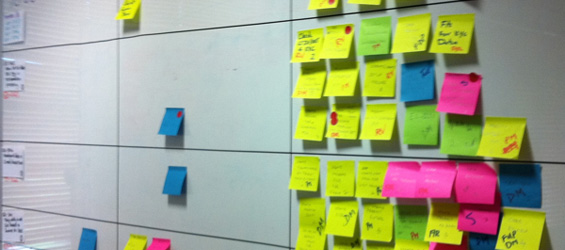
Across the board, digital agencies are attempting to make the move to a more agile process – an iterative approach to planning and guiding a project from conception through completion. But few understand what changes need to be made, how to make those changes, and which changes should be made first.
As they say, agile is easy to learn, but difficult to master.
And for each arena (in our case, digital marketing and custom web development for cause-minded organizations), the challenges can be different. Will an agile approach work for these clients? How will existing clients feel about the change? Will we even benefit from the change? What are we even changing? Isn’t agile just for software? How are we supposed to adapt that to the services we offer?
What an agile workflow offers – amongst other things – is flexibility of scope and team input.
Flexibility of Scope
This is usually the biggest reason why any agency would want to make the transition to agile. All too often thick RFPs are sent out – and thick responses are delivered. All of the requirements are gathered, an estimate is given, signatures are inked. Two weeks later, every client request is already out of scope…
Well, what do we expect? We’re human, and we want what we want. The problem is that we don’t know what we’ll want in a year, a month, or maybe even a day from now. No one’s to blame and the only way to respond to this is to change the world around it.
In the case of projects, agile means a change in the framework. Allow for flexible scope. Set the environment for a client and manage the expectation.
As an agency, you can only estimate on what you know right now; Initial estimates and contracts are still very important. The client will understand this as they’ll still have complete control and will like the fact that your agency will respond to new opportunities, should it fit within their budget.
A flexible scope will also provide the client with a product that is more likely to yield a competitive advantage, as it may have been 6+ months since the original contract was signed.
Agile is even possible for a client with a fixed budget! Many, if not all of our clients prefer to work within a fixed budget – especially those in the not-for-profit sector.
What I’ve found helps us to continue to practice agile is to use a long-term burnup approach (throughout the full project), as opposed to sprint-by-sprint burndowns.
Team Input
In Beyond the Babble, Bob Matha and Macy Boehm states that ‘communication enables people to contribute’.
Communication and team input at Liqui-Site flows in all directions. Communication is a conversation, not an issue of orders. This allows for optimal flexibility between the different expertise, quick strategy execution (including revisions, revitalization, and removal), and most importantly a very high level of engagement among team members.
All team members should be able to ask, ‘why?’; The answer to this simple question creates a deeper connection with the work, and in turn produces a higher quality product. As new channels of communication are formed amongst team members and throughout the agency, engagement and curiosity, as well as new questions and answers come to life.
Open communication and team input also builds trust. This holds true especially with clients. The level of transparency and open communication will make or break any project, and the quicker a team realizes this – and more importantly, the quicker a project manager facilitates this type of environment – the quicker a team will be able to reap the benefits of agile.

